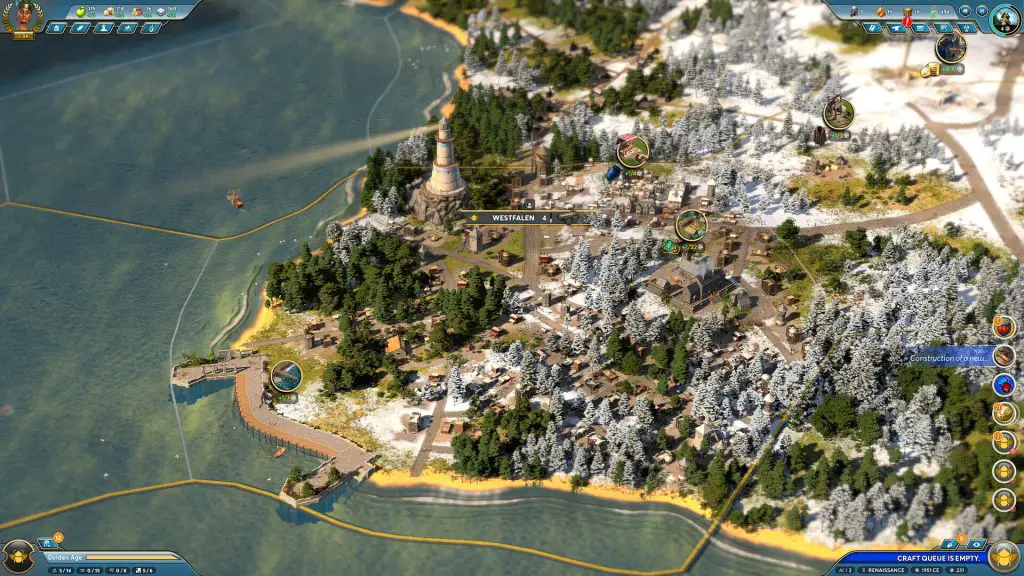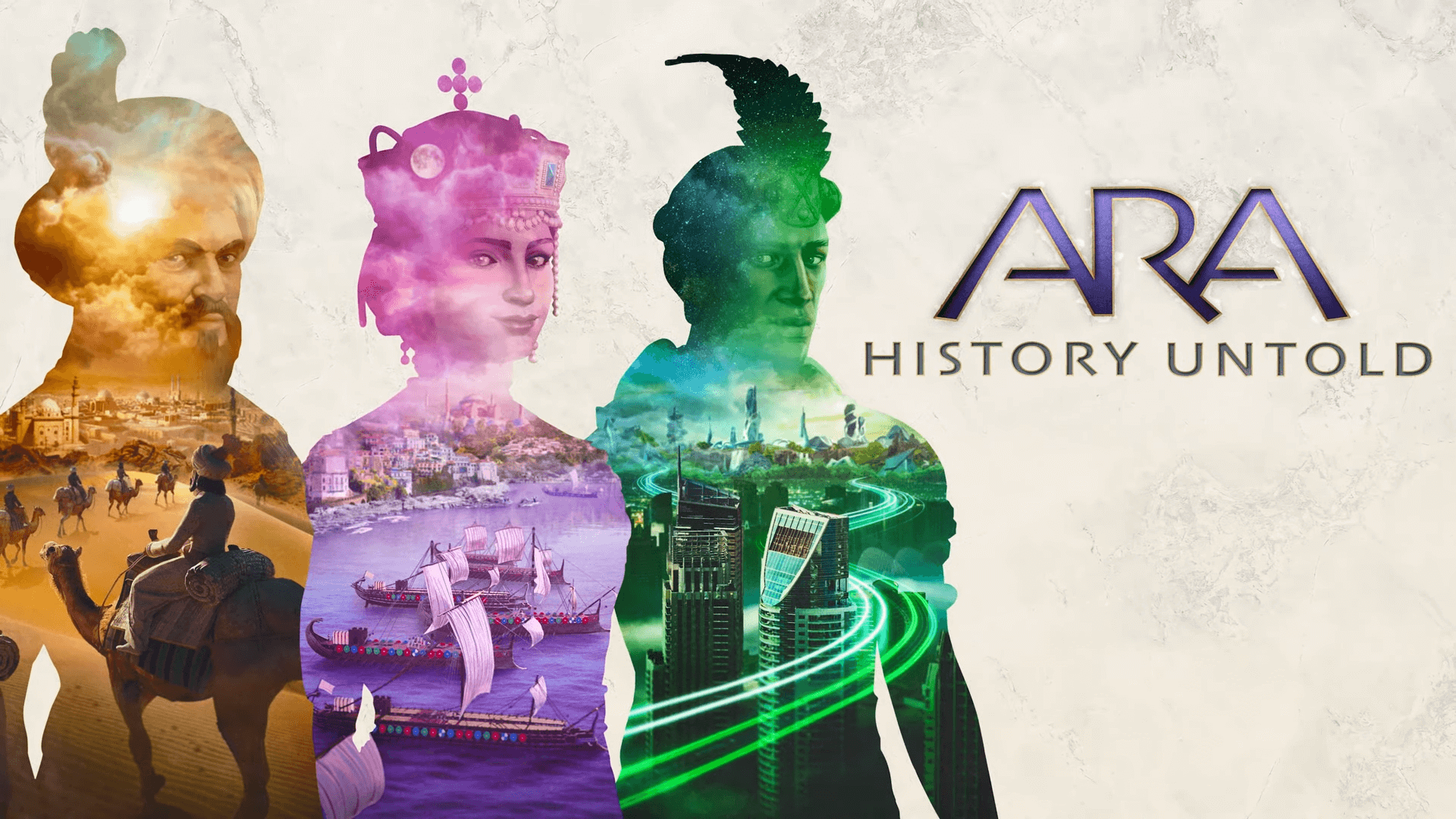The legendary Civilization burst onto the scene back in 1991. Created by Sid Meir, this game was a major step forward and is credited with popularizing the 4X genre—Explore, Expand, Exploit, and Exterminate—a genre that is synonymous with civ-like games, from the eponymous Civ to similar spin-offs like Alpha Centauri and Colonisation to its star-faring cousins like Masters of Orion or Space Empires.
The Civ series has gone through six iterations, with many spin-offs and legalistic side-tracks, and a seventh official game is on its way. But there have been some interesting diversions along the way, with mixed results.
Hooded Horse released the excellent Old World, which was part Crusader Kings 2, part Civ. But Humankind bombed, as did Paradox’s Millennia. So, can Ara: History Untold do better with another twist to the genre? Oxide games promise that Ara allows players to build their nation from the ground up in their own way. It boasts synchronous turn-based gameplay, which means no waiting for your turn in multi-player.
At the start of Ara, you choose a leader from an eclectic roster of leaders to choose from. Classical figures like Genghis Khan and Elizabeth I are there, but there are some less well-known leaders, such as Wu Zeitan and Tamar the Great. Leaders confer some basic Paradox style bonuses and a major power, such as Elizabeth I’s sea power that makes her fleets far more powerful.

Ara is set in a series of ages, which are grouped together as “Acts.” The game plays out over three acts, and civs are ranked by prestige, with the bottom 3rd of the civs culled at the end of each act! This “cut-off” point makes the game intensely competitive early on, and the act will pass quickly, so you need to make your moves carefully.
In Ara, you start off with just one city and a scout that can be used to uncover the map and discover resource caches. The city has developments; buildings and such, that will generate an additional income. Resources such as food, gold or materials are harvested and then can be crafted with the right improvements to create consumables.
These consumables can then be used to fuel additional more powerful production or in some cases, given to the city to boost one of its stats, such as happiness or health. This is a novel twist on the usual Civ theme and in the early game, this really shines and helps your civ feel real and unique.
Of course, it wouldn’t be a Civ game if you couldn’t build the Hanging Gardens of Milton Keynes. In Ara, these are referred to as “Triumphs” and they are harder to build than in Civ but that does make the feeling of completing one feel that much grander and more fulfilling.
Each improvement needs to sit in a certain “space” within the region, which will eventually fill up. There are myriad stacking and adjacency benefits, but most of them are very logical. The game’s pop up’s will warn you if you’re about to build something that will destroy a resource, for example.
After a while, the city will expand, and you’ll add a new region with new slots to build new improvements. Amusingly, these regions are named too, and I had the regions of Essex, Nottinghamshire, and Gloucestershire around my capital city of London.

You’ll also need to uncover the map and find out what’s around you. In classic civ fashion, there’s a formidable fog of war around you, which slowly peels back as your brave scouts wander around the map. They may find a cache of goods that can help you out, another civ (more on that later), and, in the early game, an awful lot of native predators.
Predators are basically low-level baddies that populate the map. They don’t attack on their own, but you can “hunt” them and gain resources and XPs, though there’s a chance that your hunters may be injured and lose some HP. It’s fun but grindy and gets a bit tiresome after a while. From a personal POV, I didn’t like it as I have a real aversion to games where I have to kill lots of animals, but it’s not a big part of the game.
Eventually, you’ll meet another civ and enter into diplomacy, though options are limited. You need to earn trust with your fellow civs before you can become “besties,” but the AI is pretty bad at diplomacy, so this isn’t a huge concern.
You’ll also encounter tribes, who are NPC humans who will potentially fight, trade, or just ignore you.
Ara has a small twist on warfare, too. Units in Ara are generally much quicker to recruit than in Civ, so you can have a much bigger army if you’ve got the income to afford them. Individual units can be put into “squads” that are then deployed and can even, with the right research, be given formations such as “Line” or “loose order,” which grants bonuses, too.
Combat is a bit opaque at times, I found it hard to figure out why I was getting some of the results I got but most of the time, the “bigger army” and “better equipment” stuff tends to make a big difference in battles. Again, the AI is a bit clueless in battles and made some nonsensical moves in my game, allowing me to concentrate forces and defeat a bigger opponent.
Research is similar to most other 4X games but has a twist, of course. In each era, there are a number of research topics, and you can pick which one you want to uncover next. But after a few breakthroughs, you can move on to a new era of science, advancing your knowledge at the expense of letting all the undiscovered tech vanish, unlearned. Now, there are many chances to uncover some things (the wheel shows up more than once), but certain things, once missed, are gone for good.
I wasn’t a fan of this system, as I didn’t like the idea of missing out on certain inventions, so I tended to be slow at researching. But it’s a novel approach, and it will create variety in playthroughs.
Ara looks great. It’s got a crisp, clean graphical style and is a nice game to look at. The unit graphics are fine and the level of detail is pleasing, even if its not especially useful for anything. I have an older gaming PC and I had to dial down the settings a bit once I hit the mid-game but it should run okay on a modern system.

However, the game’s UI is a bit of a mess. It’s quite opaque in places, and tooltips are about the only help you’re going to get from it. Considering how complex the game is, it could definitely help to make how different elements interact with each other a bit easier to comprehend.
On the subject of the complexity; Ara is a very complex game. Now complexity is neither good nor bad, it’s all about context and what you want out of it. Ara is, in many ways, a familiar sort of game to other 4X / Civ-likes but its supply chain economy and crafting system is complicated and oft times finnicky.
This is fine when you’ve got one city and just a couple of regions. By the mid-game, I had five cities, and I found that my turns were taking longer and longer, and it was getting more and more difficult. Now, this is probably fair, as a big civilization is famously hard to administrate, and that’s a factor in these sorts of games that are often just glossed over. But it’s not much fun, and from my own perspective, I didn’t enjoy it very much, and it made the mid-game a slow slog.
Now for some players, this will be fine or perhaps even be something they really enjoy. And I give the devs credit for the novel approach. But complex supply chain management doesn’t mesh super-well with the over all 4X method unless the game is about that, like Victoria 3 for example.
So it’s probably important to set your expectations when you play Ara that its more supply chain than Empire builder. Whilst there are some novel systems, your mileage may vary given the complexity of it.
The devs have been very responsive since the game release, talking about fixes and releasing patches, which is a very positive sign. There’s clearly a good game in here and the devs didn’t skimp on the ideas and the new approaches and they deserve credit for that. But your enjoyment of this game will very much depend on what you want to get out of it.
It does have that “just one more turn” thing that all good Civ-likes should have. But by the mid-game, the game’s complexity can cause it to become slow and difficult, not to mention the performance issues that come with it even on a modern system.
The synchronous multiplayer feature works quite nicely and avoids the sometimes jarring effect of turn-based games, where your characters just stand there as the enemy walks right up to them or takes up position. It’s not a novel idea by any means, but it’s a good addition for multi-player.
Multiplayer can suffer from player elimination, making the game quite unforgiving. However, this can be switched off to allow human players to stay in the game. Ara is a bold new approach to the 4X genre. It has some interesting ideas, but how much you’ll enjoy it will hinge on what you want out of the game.







